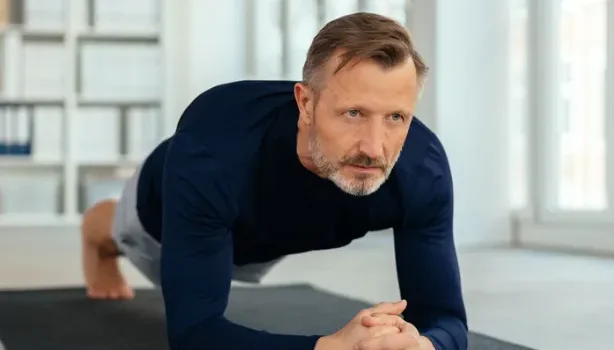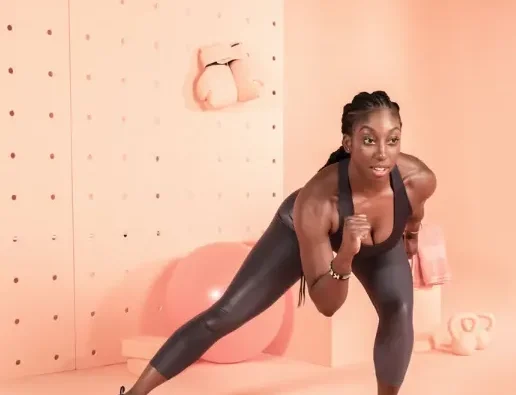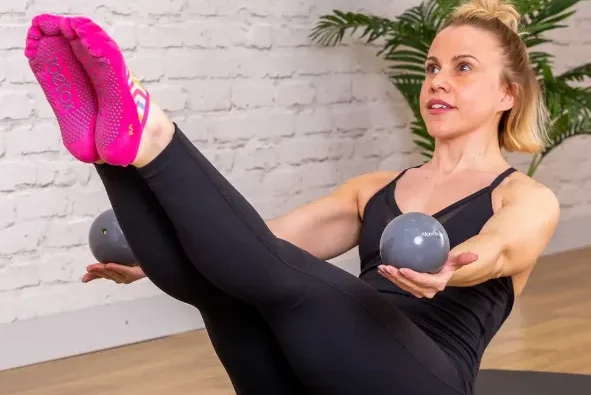
As we age, maintaining a strong core becomes more important than ever. However, many adults over the age of 40 find that core exercises often take a backseat in their workout routines. This neglect, combined with potential weight gain around the midsection, can lead to complications such as back and hip pain.
The core is much more than just the abdominal muscles we see on the beach; it involves the back, hips, pelvis, and stomach. These muscles are essential for movement, stability, and overall body support, and a weak core can make daily activities more difficult and increase the risk of injury, especially as we age.
A strong core also plays a key role in balance, which is critical in preventing falls. In fact, fall-related injuries cost billions of dollars each year, particularly for those aged 65 and older. Fortunately, these types of injuries can often be prevented with some simple core-strengthening exercises that you can start doing today. Here are four excellent bodyweight exercises that will help improve your core strength and stability, even if you haven’t been prioritizing your midsection lately.
1. Superman
The Superman exercise is fantastic for strengthening the back muscles, which are integral to good posture and balance. It may feel awkward at first, but with consistent practice, it will become more fluid and natural.
How to do it:
- Lie face down with your arms stretched out in front of you.
- Tighten your abdominal muscles and simultaneously lift your head, neck, right arm, and left leg about two inches off the floor.
- Lower and repeat the movement with the left arm and right leg. That counts as one repetition.
- If needed, reduce neck strain by slightly lowering your head. For beginners, raise one arm at a time, followed by one leg at a time.
Start with 3 sets of 5 reps, gradually increasing as you feel more comfortable.
2. Segmental Rotation
Rotating the body is an often-overlooked movement in core training. This exercise helps maintain mobility in your lower back and hips, and it’s great for improving flexibility, especially if you’re a runner or spend a lot of time sitting.
How to do it:
- Lie on your back with your feet flat on the floor, and keep your hips, shoulders, and head grounded.
- Tighten your core and slowly lower your knees to one side, rotating as far as comfortable.
- Once you feel a stretch (but not pain), hold for a few breaths before returning to the center.
- Repeat the movement on the other side.
Start with 3 sets of 5 reps per side.
3. Bent Knee Hollow Hold
This exercise focuses on strengthening deeper core muscles that surround the spine and internal organs, helping to prevent lower back and hip pain. It’s crucial to train these muscles for overall stability.
How to do it:
- Lie on your back with your feet flat on the floor and arms by your sides.
- Flatten your lower back against the floor by pulling your belly button and rib cage toward the ground.
- Lift your head, neck, and arms off the floor, tucking your chin to your chest.
- Lift your legs so that your knees are bent at a 90-degree angle.
- Hold this position for 12 seconds, focusing on maintaining a flat lower back.
Start with 3 sets of 12-second holds and gradually increase the duration as you gain strength.
4. Bridge
The bridge exercise is an excellent way to strengthen the glutes, a key part of your core. As we age, long hours of sitting can make the glutes weak and tight, which may contribute to poor posture and back pain.
How to do it:
- Lie on your back with your knees bent and feet flat on the floor.
- Tighten your abdominal muscles and press your lower back into the floor.
- Squeeze your glutes and raise your hips off the ground, keeping your shoulders and knees in line.
- Hold the position for a few deep breaths, then slowly lower your hips back to the floor.
Start with 3 sets of 5 reps, focusing on quality over speed, and build from there as your glutes get stronger.
Building a Stronger Core
These four exercises are a great starting point for building a strong core and improving overall stability. Remember, it’s important to progress gradually, starting with easier variations and increasing difficulty as your strength improves. When these movements start to feel easier, challenge yourself by adding more sets or trying a more difficult variation. A stronger core will not only help you feel better but also reduce the risk of injury and improve your quality of life as you age.












